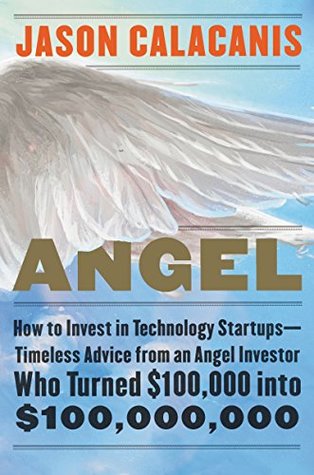More on this book
Community
Kindle Notes & Highlights
Read between
December 25, 2017 - January 28, 2018
Add a fourth column to your Google spreadsheet
a recurring calendar reminder for every six months to visit this spreadsheet
a fifth column with notes on how the twenty-four companies you passed on are doing—specifically
This includes reviewing their product, understanding the market they operate in,
knowing who their competitors are, and knowing who else has already invested in the company.
“How can I be more valuable than they are?”
Show up focused, with a notebook and pen so you can take notes like an adult.
if you are writing checks and don’t have a conference room available, it makes me wonder why not.
You pick billion-dollar founders.
it’s fairly easy to know which founders and ideas are so shitty—or
I eliminate the small ideas and weak founders. Then I double down on the great founders and big ideas.
pretty sure which businesses will not be—and not waste time engaging them.
how many full-time employees they have, how much money they’ve made, their funding history, how they acquire customers, and why they are building this business.
The FTE and money-raised answers tell me what their burn rate is and how much they have left in the bank.
Asking for more detail before an in-person meeting shows founders that you are focused on things that matter, not just taking meetings because you’re lonely.
Independent films, restaurants, bars, bed-and-breakfasts, consulting firms, clothing lines, and microbreweries are—with very rare exceptions—the businesses that, no matter how hard you and the founders work on them, will not scale.
“I don’t need to know if your idea is going to succeed, I need to know if you are,”
Why has this founder chosen this business? How committed is this founder? What are this founder’s chances of succeeding in this business—and in life? What does winning look like in terms of revenue and my return?
Question Zero
The act of selecting a feature as their life’s work, as opposed to a full-blown product or a mission, disqualifies them from being a true founder.
you simply write down what their revenue is and how many full-time employees they have.
Let’s say they raised $1 million a year ago. I can now estimate that they’ve lost $50,000 a month over twelve months, for $600,000, and have $400,000 left in the bank. They are burning $50,000 a month, so they have eight months left.
it bonds me with the founder. What a founder’s parents think of their path is critical, almost as critical as what the founders themselves think of their chosen path.
The number one reason a startup shuts down is not actually running out of money, which is what most people believe. The number one reason a startup fails is that the founder gives up.
you can be sure that this founder will quit when they get a better
offer.
Another huge red flag is founders who won’t start working until they are funded.
founders who won’t do certain jobs, like making a sales call.
ones who want to have balance in ...
This highlight has been truncated due to consecutive passage length restrictions.
founders wasting time at events that will not directly result in landing investors, clients, or team members, I cringe.
founders who spend their money and time on their office space instead of their products.
the founders of a company sell off a great deal of shares early, transferring all of the risk and responsibility to their investors.
Rule number one if you do a big hit is to keep your head down and not do any conspicuous consumption.
to see how the founders behave during your meetings and to questions over email.
revenue by quarter? how long has the product been in market (months)? i’ve seen a couple of businesses in this space fail over the years—why will it work this time?
These founders, who are not concise in their communications, are probably not going to do well in the long term.
If you’re a first-time founder, it is your job to build a functioning prototype, or MVP, and hopefully run a beta test. A first-time founder might, if they have a wealthy family, ask their rich aunt and parents to put up $25,000 so they can quit their jobs and hire a designer to complete these first steps
I recommend that you not meet with anyone who doesn’t have a product in the market.
You should meet with the best teams capable of building products with sweat equity (see chapter 7) and who have the most traction.
there are enough companies that have product/market fit, some traction, and some angel investors but need more capital to finish their mission.
Pro rata is the right to maintain your percentage, and it’s important because sometimes a new investor will want to invest and take the entire round
build a syndicate of other investors to do so and share the upside with them.
Pro rata rights are a must and you should never do a deal without them.
“How did you arrive at that valuation?”
“Is that valuation set in stone?”
valuations are not as important as understanding who the other investors are, how the business is doing, who the customers are, and who’s on the team.
venture capitalists look at the startups that have survived the “angel phase” of investing, where products are desperately looking for a market, and the teams are tiny and perpetually under-resourced.
deal memos force you to crystalize your thinking in the short term. They also help you refine your selection ability in the future by reading your past deal memos to see what you got right and wrong.
Introduction, Deal, Competition, Hiring Plan, Key Risks, and a Recommendation.
rank the


